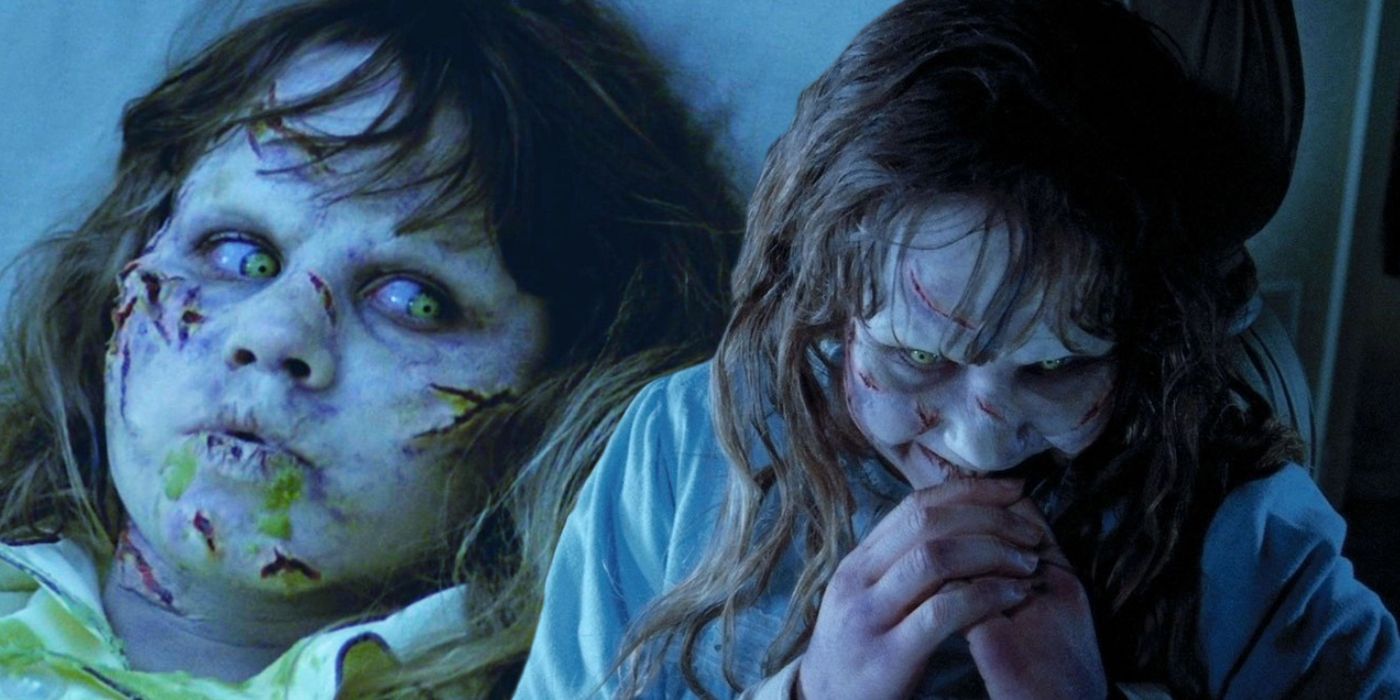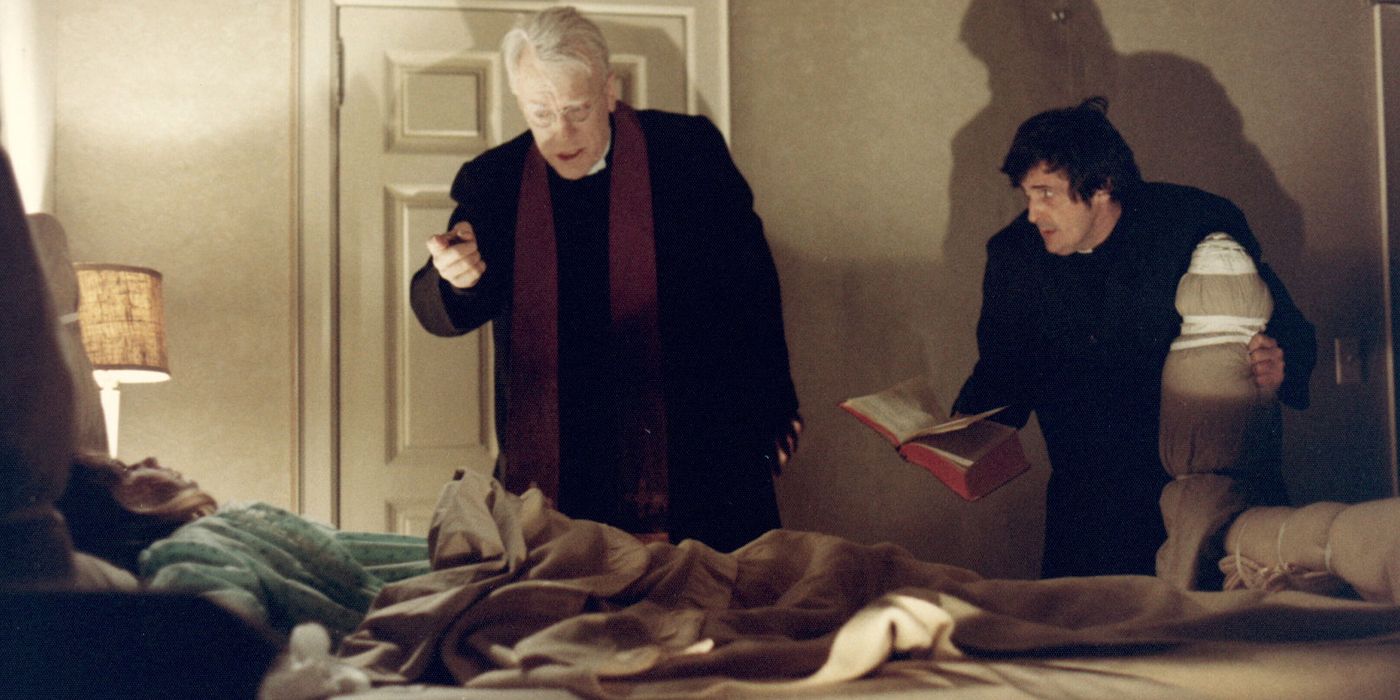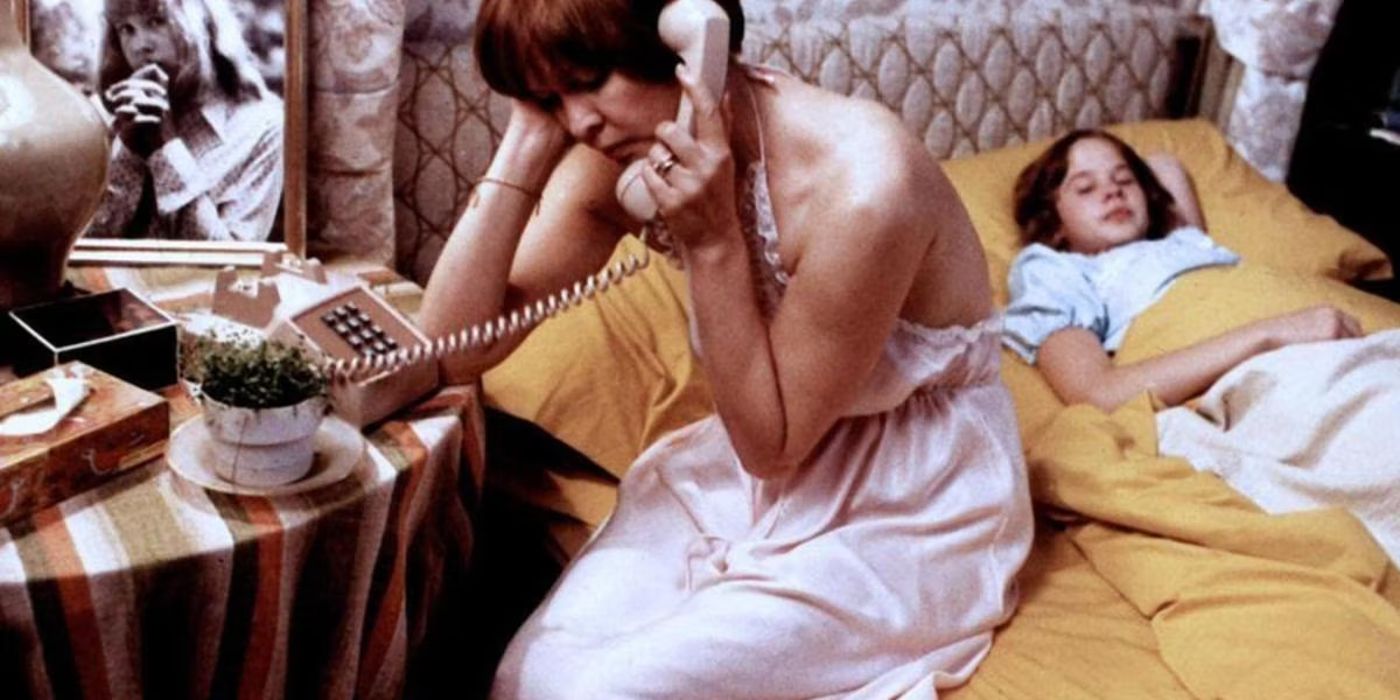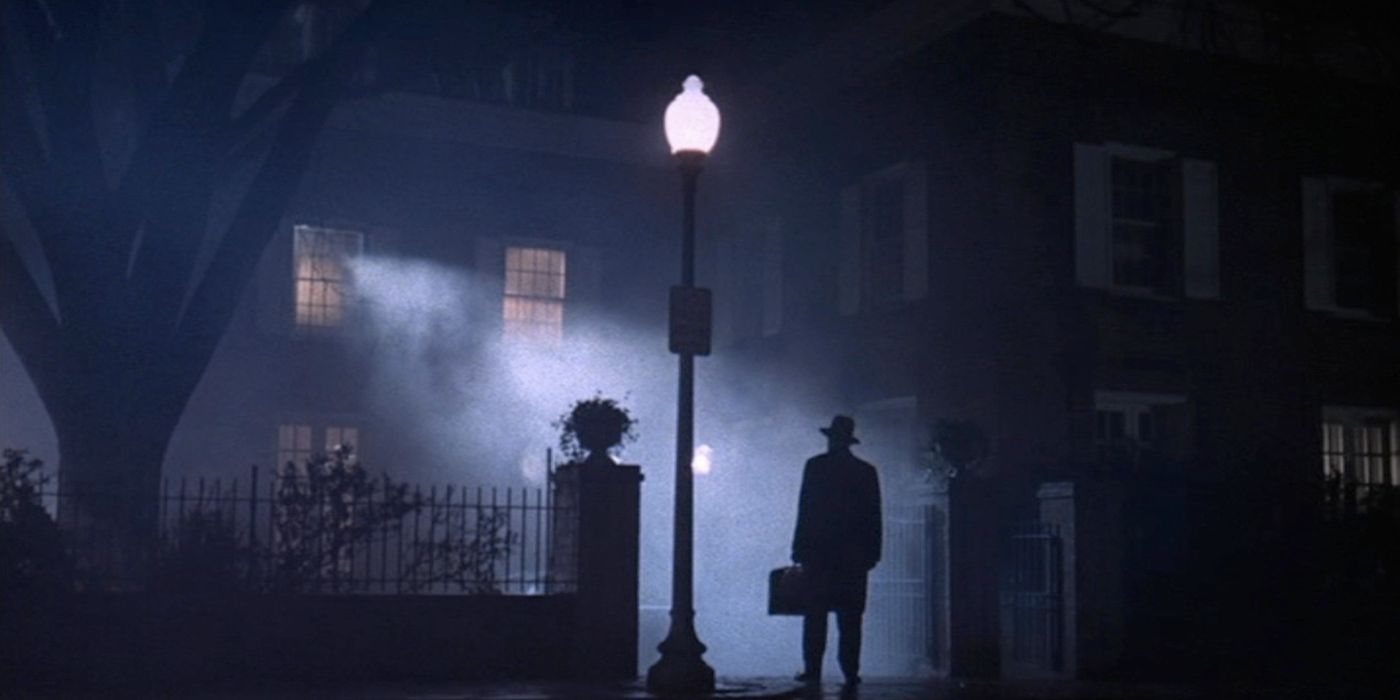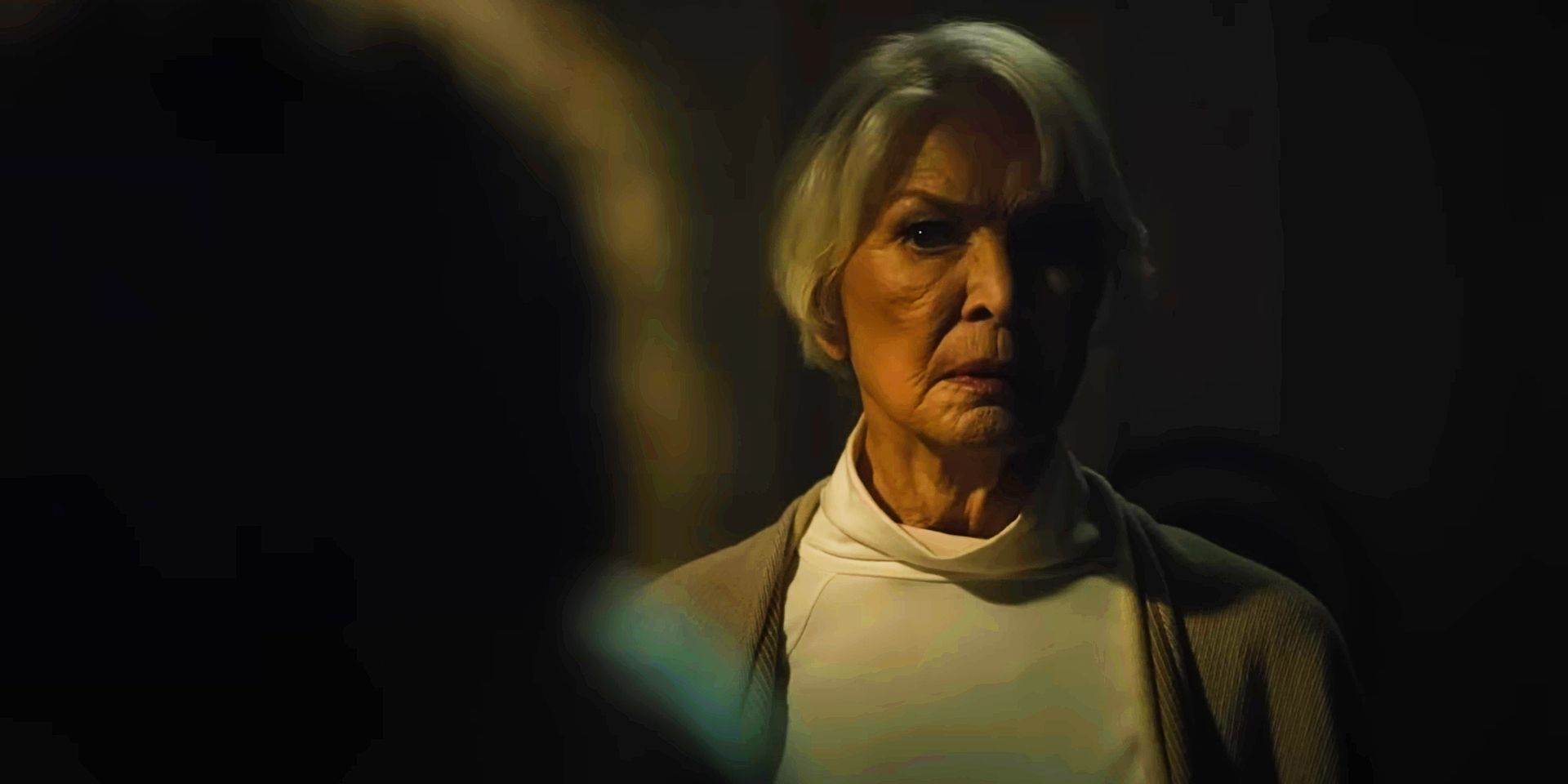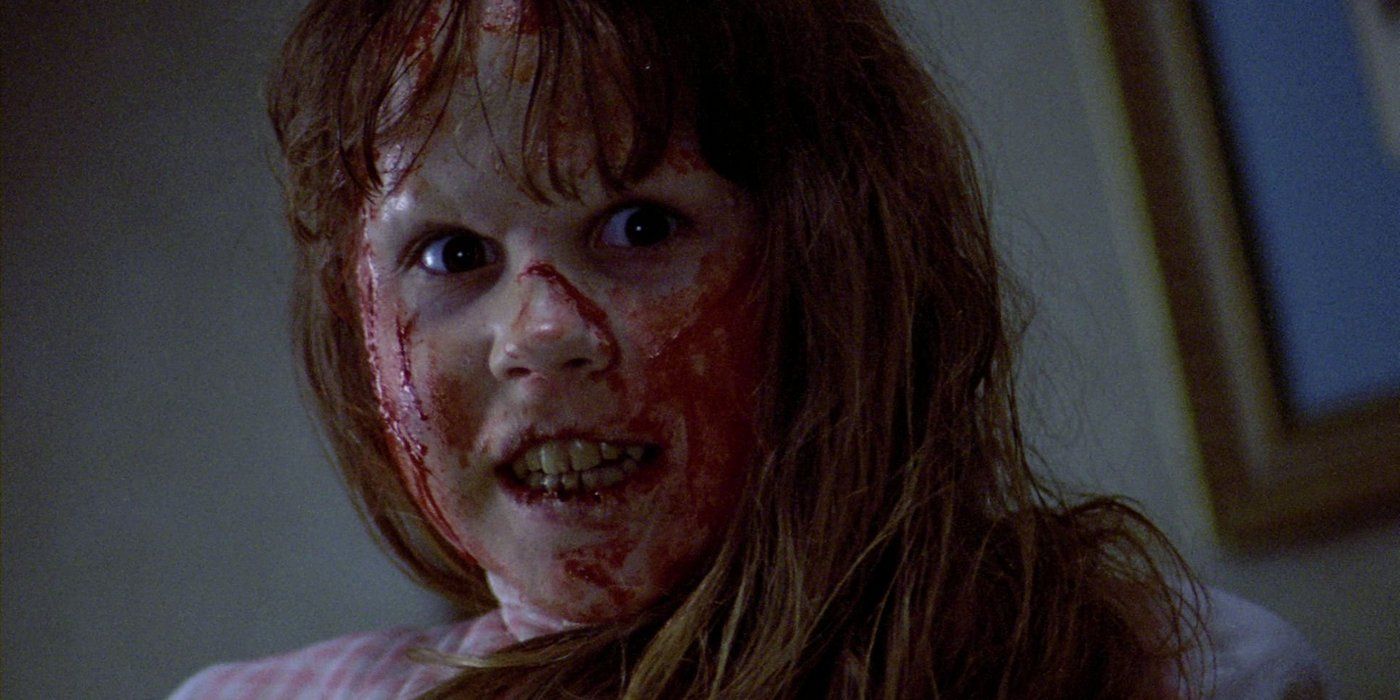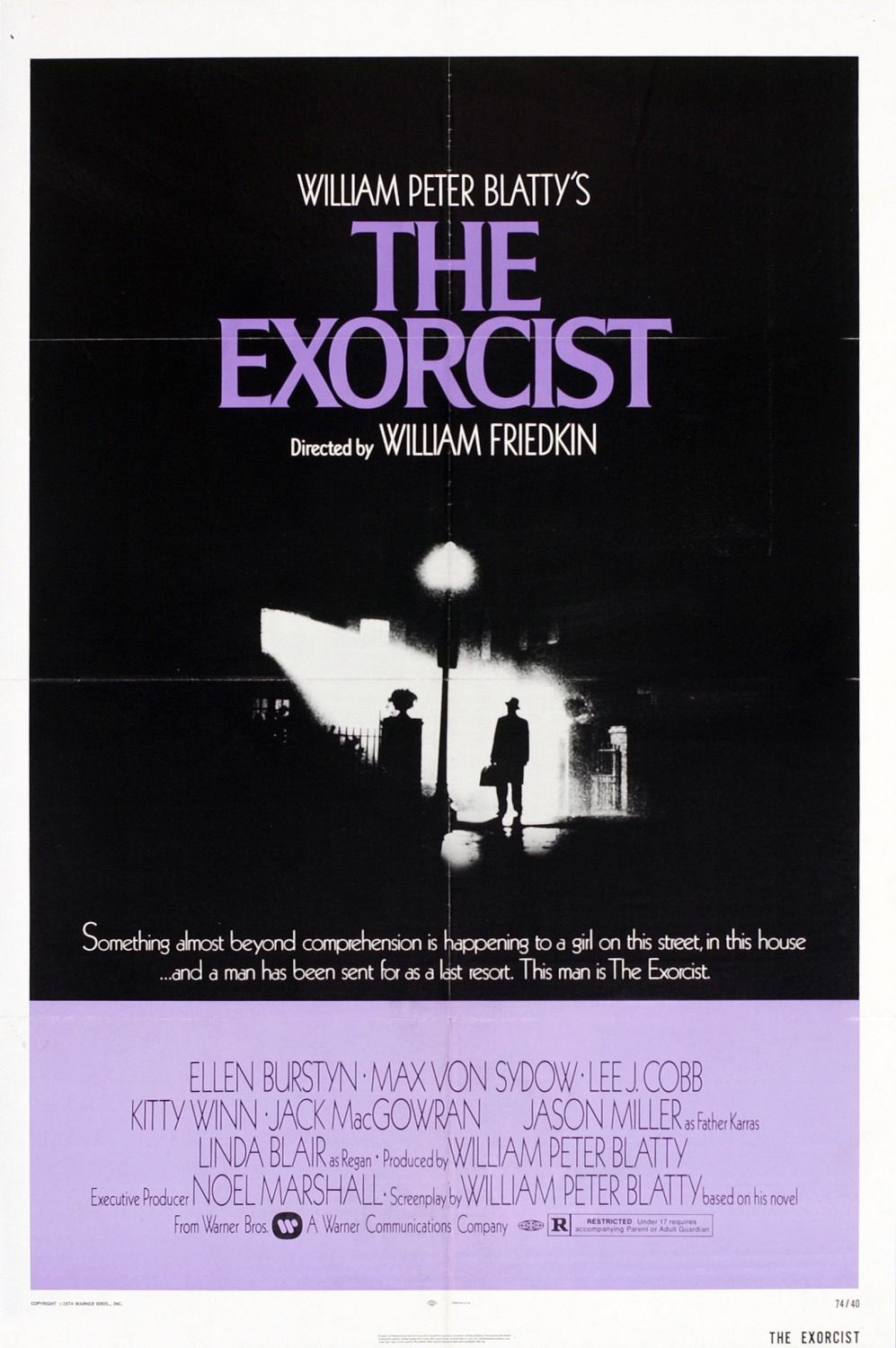[ad_1]
William Friedkin’s The Exorcist explained in full can be a tricky topic. The franchise is known for its deep symbolism, and the use of supernatural beings often leaves room for allegory relating to the human condition through the capacity for fear. The Exorcist follows Regan MacNeil (Linda Blair), a young girl who encounters a powerful malevolent demon that takes control of her body. Regan’s mother, Chris (Ellen Burstyn), fearing for her daughter and left in despair by a string of baffled doctors, turns to the church for help.
Fathers Merrin and Karras arrive at the MacNeil house to attempt to save Regan’s life from the demon inhabiting her body. They discover it to be a powerful being called Pazuzu, and set about performing the dangerous but critical eponymous exorcism that is Regan’s only chance of surviving her brush with evil. Though the exorcism claims the lives of both priests, they banish Pazuzu. The traumatic ordeal brings Regan and Chris back together and renews their faith in the Church ahead of the Exorcist sequel films.
The Exorcist’s Real-Life Inspiration Explained
The Original Exorcism Was Of Roland Doe
Though it may not seem the most likely candidate for a “based on real events” label, The Exorcist was in fact based on a true story. Friedkin’s movie was adapted from the novel of the same name by William Peter Blatty. However, Blatty’s book was inspired by the author’s reading of the report of Roland Doe, later identified as NASA engineer Ronald Hunkeler. The Exorcist‘s true story was that of Roland Doe, a young boy from Cottage City, Maryland in the 1940s who reportedly underwent a possession and exorcism very like those in the movie.

Related
20 Best Horror Movies Of All Time
What are the best horror movies of all time? Every fan has their opinion, but these movies have stood the test of time to become certifiable icons.
Roland Doe’s story involves an Ouija board given to him by an aunt who died shortly after, and numerous unexplained occurrences, including strange noises, flying objects, and rattling inside the walls. Roland later became unnaturally aggressive towards a visiting priest and had unnatural scratches over his body before an exorcism eventually took place.
Roland’s exorcism was supposedly successful, and the boy went on to live a meaningful life.
Just like in the movie, Roland’s exorcism was supposedly successful, and the boy went on to live a meaningful life. The fact that it has a real-life basis only reinforces the claim that The Exorcist is the scariest horror movie ever made. Despite its dramatization, the film’s story is supposedly based on a true story.
The Real Significance Of Father Karras’s Medallion
The Medallion Prot6ects Father Karras From Demons
The importance of Father Karras’s medallion is not overtly explored in The Exorcist, but it is hinted at through subtext and visual clues. Karras’s medallion serves as a form of protection from possession, as Pazuzu is unable to actively harm him before ripping it off of him. Once the medallion is no longer around Karras’s neck but is instead in Regan’s hands, Pazuzu leaves Regan’s body and enters Karras, allowing the priest to jump from the window, killing both himself and Pazuzu at the same time.
Joseph’s role in Jesus’s life also mirrors that of Karras’s role in Regan’s
Interestingly, the medallion worn by Father Karras in The Exorcist features the image of St. Joseph, who was the adopted father of Jesus. Joseph is the patron saint of holy death, which is particularly fitting considering Karras’s ultimate fate – he dies in the process of killing a demon to save a child. Joseph’s role in Jesus’s life also mirrors that of Karras’s role in Regan’s: the priest serves as a symbolic stand-in for the girl’s absent father, and his medallion hints that his sacrifice should be considered a part of that role.
The Exorcist Sees Science Trumped By Faith
Doctors Couldn’t Save Regan
One of The Exorcist‘s key themes is the triumph of faith. Chris MacNeil’s first instinct upon Regan’s possession was to contact doctors and other medical professionals, but they repeatedly drew a blank regarding treating her. The story of The Exorcist sees evil besieging Regan MacNeil, and it’s faith alone that saves her.
This theme also extends to Father Karras. He is shown to have had a crisis of faith, and it is only reaffirming his religion that allows him to save Regan in The Exorcist‘s ending. The subtext isn’t purely religious, though: it’s more an examination of the idea that not every facet of human experience can be explained by science.
The Exorcist Is About The Breakdown Of The Traditional Family
The Film Argues A Child Needs A Complete Family
Perhaps the most significant of The Exorcist‘s deeper themes is its family symbolism. Regan begins the movie as part of a broken home, with her relationship with her mother particularly strained as a result. The Exorcist explained that with no father figure in her life, the forces of evil beset Regan, and it’s only through embracing the paternal warmth of Merrin and Karras that Pazuzu’s hold on the girl is broken. There’s obvious symbolism in Regan’s family life.
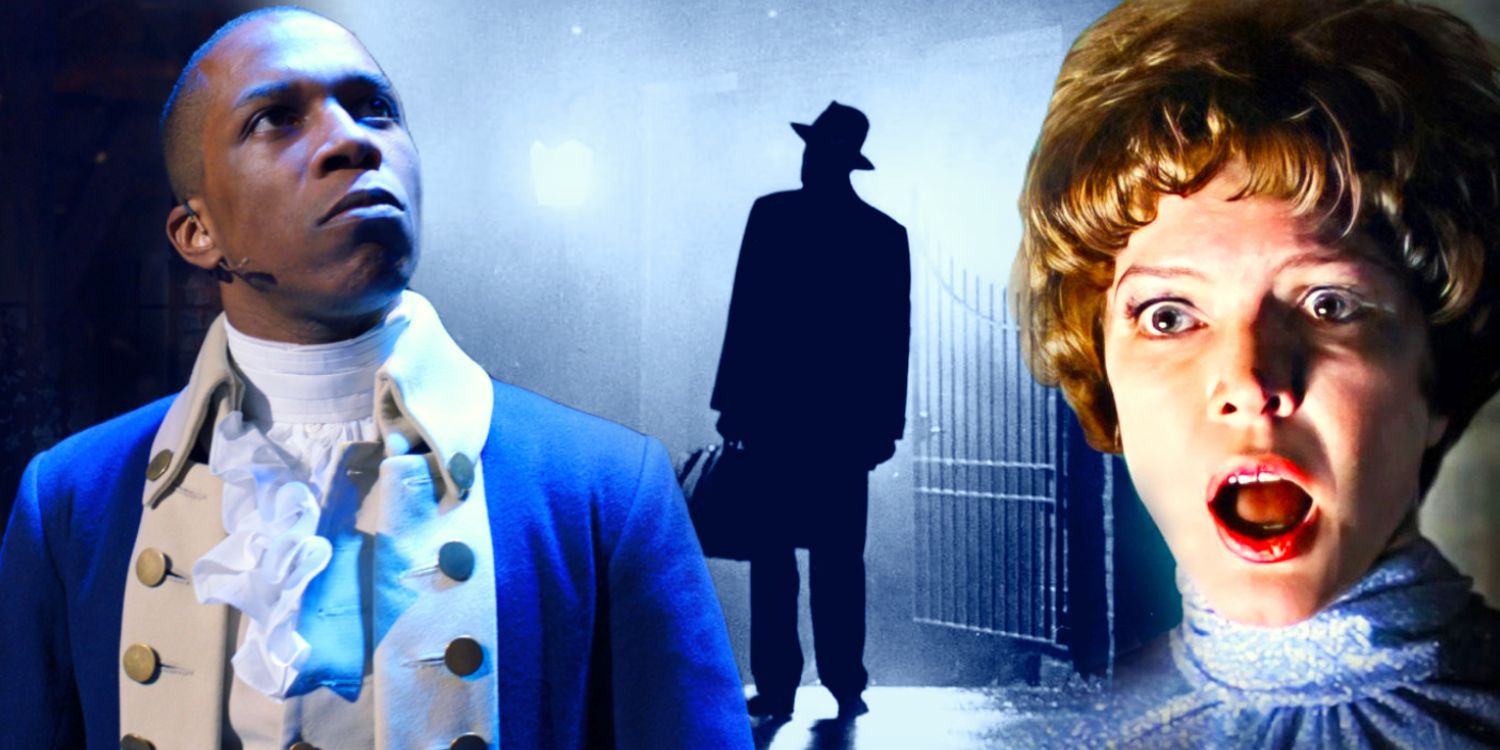
Related
The Exorcist: Believer’s Cast & Character Guide – The Handmaid’s Tale Actor Joins New Reboot
Led by Leslie Odom Jr., The Exorcist: Believer has a talented cast. But what characters are they playing in the new reboot?
It implies that children need a whole family unit to come through their childhoods unscathed. The Exorcist explores alternatives to traditional parenting; some children fall prey to damaging influences, while others find a sense of belonging in institutions or organizations, such as the Church. By having two priests, Fathers Merrin and Karras, the symbolism is blatant: The Exorcist‘s horror stems from the outdated notion that the breakdown of tradition can have an adverse effect on children.
The Real Meaning Of The Exorcist’s Ending
Regan Needed To Find Her Father Figure
The Exorcist ending explained much about the film’s general message. Regan’s absent father creates a hole in her life, one that – despite her mother’s best intentions – was filled by a demon. The efforts of a single parent were insufficient to free Regan from Pazuzu – instead, the might of the Church’s father figures was required to save Regan from eternal damnation. The Exorcist‘s ending sees Regan and Chris reconcile their faith against the modern breakdown of tradition and find a source of comfort in their faith.
The Exorcist ending suggests that children in need of guidance can find it in many places, but the faith and sacrifice of parental figures are key in keeping children safe from the corruption of evil forces and the breakdown of traditional values. The Exorcist movie story may primarily be about a demon possessing a young girl, but its message is actually far deeper than the film’s iconic horror scenes otherwise imply.
How The Exorcist Ending Compares To Later Movies In The Franchise
The Sequels Took The Original Idea & Made It More Convoluted
The Exorcist stands as a seminal work in horror cinema and set a precedent that not only influenced the entire horror genre, but subsequent entries in its own franchise tried to emulate too. Later Exorcist movies tried to build upon this foundation but struggled to achieve the same level of emotional resonance and thematic depth. Exorcist II: The Heretic delved into the mythology of the demon and its connection to Regan, but its abstract narrative and deviation from the original’s tone made it less well-received.
The Exorcist III, while returning to a more horror-centric narrative, intertwined the story with a serial killer and brought back Karras in a convoluted manner. The prequels Exorcist: The Beginning and Dominion: Prequel to the Exorcist – essentially two different edits of the same movie – sort to explore the origins of the demon Pazuzu and Father Merrin’s first encounter with it.
Typical of legacy sequels, 2023’s The Exorcist: Believer’s ending brings back Linda Blair’s Regan, but it isn’t enough to save the convoluted way the movie attempts to set up two more films. These films’ endings offered different perspectives on the enduring battle between good and evil, but none managed to capture the raw intensity and emotional depth of the original The Exorcist conclusion.
How The Exorcist Ending Was Received
Fans Were Mixed About The Failed Exorcism & Sacrifice
When it comes to The Exorcist’s ending, there was confusion about the failed exorcism, and Father Karras’s sacrifice. One Reddit thread started with a person asking why Karras didn’t start with this instead of wasting time with the exorcism. However, Redditor MrAnonymous117 wrote, “A demon needs to have permission to enter a person’s life in order to possess them.. Obviously Karras wouldn’t want to let the demon into his body right away – it was done as a last resort. The exorcism was a failure, but saving Regan was not.”
There was another Reddit thread that broke down a difference that made the book better than the movie in one regard. Redditor Cautious-Promise-663 wrote:
“After Father Merrin dies, Father Karras completely loses his temper, jumps over the possessed Regan and beats her until the demon passes to his own body. He then uses his last moments of self-control to sacrifice himself, taking the demon with him.
In the book, however, Father Karras doesn’t beat Regan. He actually convinces the demon to possess him by taunting it, by insulting the demon’s pride. I think this is more interesting than the movie’s version because it both emphasizes Father Karras cleverness as a psychiatrist and contrasts it to the Demon’s vanity.”:
Regardless of any complaints or comparisons to the book, the Exorcist ending was one reason that the film ended up as the first horror movie nominated for an Oscar, and one of the best horror movies of all time. Roger Ebert wrote, “The last chapter of the novel never totally explained in detail the final events in the tortured girl’s bedroom, but the movie’s special effects in the closing scenes leave little doubt that an actual evil spirit was in that room, and that it transferred bodies. Is this fair? I guess so; in fiction the artist has poetic license.“
[ad_2]
Source link
